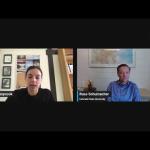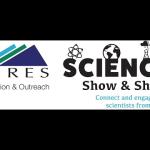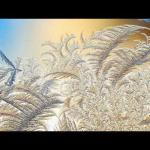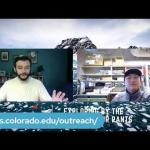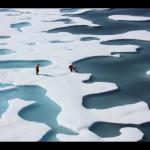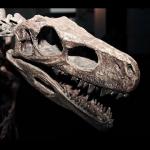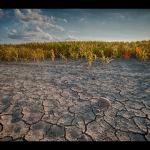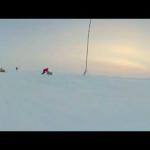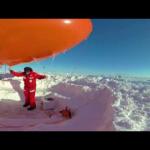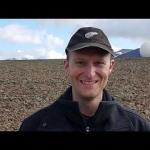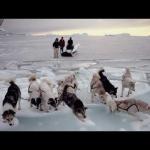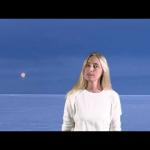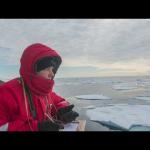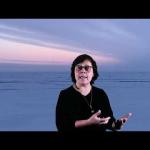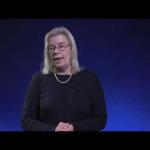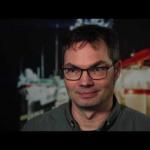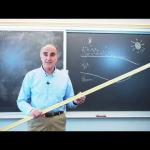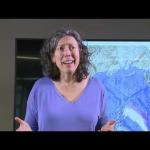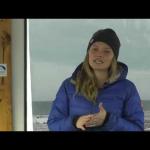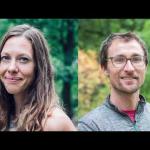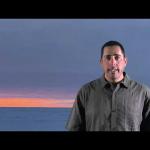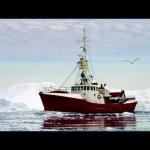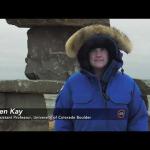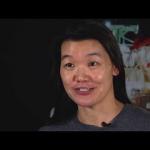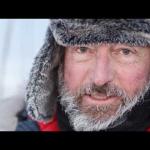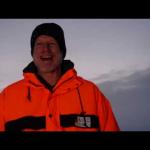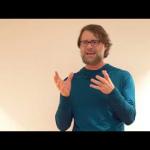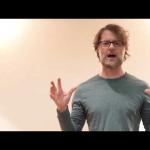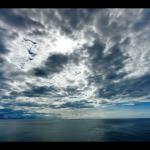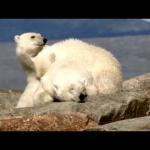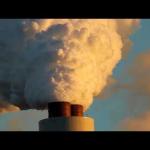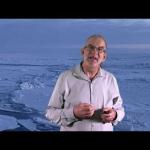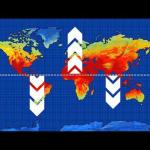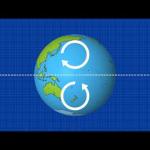Earth Science Stories
Discover the intricate web of climate, drought, and climate change in the Southwestern US in this engaging 25-minute talk and 20-minute LIVE Q&A. Our seasoned climatologist, Russ Schumacher, will explore Colorado's climate, the significance of mountain snowpack, and the path of water to rivers. Uncover key climate metrics like temperature and precipitation and their impact on water resources. Explore the diverse nature of drought, its definitions, and its evolving face under the influence of climate change.
Recorded Science Talks
Science Show and Share
Join Daniela Pennycook from the Cooperative Institute of Research in Environmental Sciences, Dr. Mimi Hugues, Research Meteorologist at the National Oceanic and Atmospheric Administration, and Andy Anderson, Forecaster at the Sierra Nevada Avalanche Center in this special webinar on Atmospheric Rivers, learn all about what they are, how we measure them, and the impact this environmental phenomenon has had on the U.S. in 2023.
Science Show and Share
This webinar is part of a 4-part series on life at McMurdo Station, Antarctica. Watch this stand-alone video on seasons in the polar regions or watch all four webinars.
Recorded Science Talks
Science Show and Share
This webinar is part of a four-part series on life at McMurdo Station, Antarctica. Watch this stand-alone video on the upper atmosphere or watch all four webinar recordings.
Recorded Science Talks
Science Show and Share
This webinar is part of a 4-part series on life at McMurdo Station, Antarctica. Watch this stand-alone video on seasons in the polar regions or watch all four webinars.
Recorded Science Talks
Science Show and Share
In this stand-alone video, Dr. Matthew Burgess talks about science policy and how math, economics, and climate science are related.
Science Show and Share
In this stand-alone video, Dr. Walt Meier presents on Sea Ice (What it is and why we study it).
Science Show and Share
In this stand-alone webinar, Dr. Julio Sepúlveda presents: What do fossil molecules tell us about Earth’s history and the extinction of dinosaurs?
Science Show and Share
In this stand-alone webinar, Dr. Rosimar Rios-Berrios presented on her research in hurricanes, cyclones, and forecasting.
Science Show and Share
In this stand-alone webinar, Dr. Hoell presents on Flash Droughts.
Science Show and Share
Watch MOSAiC researchers work near a meteorological tower on Arctic sea ice in this 360-degree video experience. Click and drag for a full 360-degree view!
Virtual Field Trip
Watch as scientists climb a meteorological tower on the ice to repair instruments that collect atmospheric data during the 2019-2020 MOSAiC research expedition. Click and drag for a full 360-degree view!
Virtual Field Trip
In this 360-degree video, scientists park a large weather balloon nicknamed "Miss Piggy" in a tent during the 2019-2020 MOSAiC Arctic research expedition. Click and drag for a full 360-degree view!
Virtual Field Trip
This video is part of a collection - “Frozen in the Ice: Exploring the Arctic." Check out the MOSAiC page for more details.
In this specific lesson, Dr. Scott Stephenson focuses on the link between climate change and human activities. You'll learn how melting sea ice contributes to economic transformation of the Arctic.
Science Content Video
This video is part of a collection - “Frozen in the Ice: Exploring the Arctic." Check out the MOSAiC page for more details.
In this specific lesson, Dr. James Overland discusses how sea ice loss can cause major changes in the Arctic climate — and more specifically, in the polar jet stream.
Science Content Video
This video is part of a collection - “Frozen in the Ice: Exploring the Arctic." Check out the MOSAiC page for more details.
In this specific lesson, Dr. John Walsh discusses how climate change is apparent throughout the Arctic (air, land, ice, and ocean) and that these changes are already impacting humans, wildlife, and the environment.
Science Content Video
This video is part of a collection - “Frozen in the Ice: Exploring the Arctic." Check out the MOSAiC page for more details.
In this specific lesson, Dr. Amy Solomon defines process modeling as an iterative process between observations and theory. You'll learn with specific examples how scientists in both the SHEBA and MOSAiC expeditions move through this process in their work.
Science Content Video
This video is part of a collection - “Frozen in the Ice: Exploring the Arctic." Check out the MOSAiC page for more details.
In this specific lesson, Dr. Marika Holland will teach you about climate models. She also asks the question: How will climate extremes and environmental changes in the Arctic reverberate around the world?
Science Content Video
This video is part of a collection - “Frozen in the Ice: Exploring the Arctic." Check out the MOSAiC page for more details.
In this specific lesson, Dr. Wieslaw Maslowski explains the process of formulating regional models of the Arctic. You'll learn about the relative benefits of such models compared to those at the global scale.
Science Content Video
This video is part of a collection - “Frozen in the Ice: Exploring the Arctic." Check out the MOSAiC page for more details.
In this specific lesson, Dr. Amy Solomon will teach you about her role in MOSAiC in coordinating international forecasting efforts. Data collected in the Arctic during the expedition form the basis of more accurate regional and global models in the future.
Science Content Video
This video is part of a collection - “Frozen in the Ice: Exploring the Arctic." Check out the MOSAiC page for more details.
In this specific lesson, Dr. Gunilla Svensson explains how important Earth system models are to understanding where both global and Arctic climate systems are headed. You'll also learn about the key role MOSAiC's modeling team plays in the expedition.
Science Content Video
This video is part of a collection - “Frozen in the Ice: Exploring the Arctic." Check out the MOSAiC page for more details.
In this specific lesson, Dr. Jessie Creamean discusses how aerosols affect clouds and precipitation in the atmosphere and why they're important to the Arctic.
Science Content Video
This video is part of a collection - “Frozen in the Ice: Exploring the Arctic." Check out the MOSAiC page for more details.
In this specific lesson, Dr. Clara Hoppe sheds light on the small but mighty phytoplankton! You'll learn about MOSAiC's special interest in primary production, carbon export, and groundbreaking data scientists expect to glean from the expedition.
Science Content Video
This video is part of a collection - “Frozen in the Ice: Exploring the Arctic." Check out the MOSAiC page for more details.
In this specific lesson, Dr. Hauke Flores describes sea ice as an important driver in Arctic food webs. You'll learn about the serious threats climate change poses to biodiversity and key species dependent on ice cover.
Science Content Video
This video is part of a collection - “Frozen in the Ice: Exploring the Arctic." Check out the MOSAiC page for more details.
In this specific lesson, Dr. Donald Perovich discusses sea ice mass balance. You'll learn about the data collection tools used by MOSAiC scientists including stakes, temperature strings, and autonomous buoys that measure Arctic ice melt and growth through the seasons.
Science Content Video
This video is part of a collection - “Frozen in the Ice: Exploring the Arctic." Check out the MOSAiC page for more details.
In this specific lesson, Dr. Bonnie Light adds new meaning to her name! You'll learn about sunlight's vital role in the Arctic system — specifically, how it affects melting in the summer and how different albedos play into this.
Science Content Video
This video is part of a collection - “Frozen in the Ice: Exploring the Arctic." Check out the MOSAiC page for more details.
In this specific lesson, Kaare Sikuaq Erickson discusses the Ukpeaġvik Iñupiat Corporation (UIC) and its role in nearly twenty-five thousand research sites in/around Barrow, Alaska. You'll also learn about Arctic indigenous populations that live in areas affected by climate change.
Science Content Video
This video is part of a collection - “Frozen in the Ice: Exploring the Arctic." Check out the MOSAiC page for more details.
In this specific lesson, Alysa McCall and Dr. Steve Amstrup talk all things polar bear! You'll learn how climate change affects them and hear from Trude Hohle about their role in the MOSAiC expedition.
Science Content Video
This video is part of a collection - “Frozen in the Ice: Exploring the Arctic." Check out the MOSAiC page for more details.
In this video, Drs. Anne Gold and Matthew Shupe conclude the series "Frozen in the Ice: Exploring the Arctic" with a summary of the course's major lessons.
Science Content Video
This video is part of a collection - “Frozen in the Ice: Exploring the Arctic." Check out the MOSAiC page for more details.
In this specific lesson, Dr. John Cassano describes the role of the Arctic in the Earth's energy budget and climate system.
Science Content Video
This video is part of a collection - “Frozen in the Ice: Exploring the Arctic." Check out the MOSAiC page for more details.
In this specific lesson, Dr. Matthew Shupe broadly defines MOSAiC. From the very first expedition of Fridtjof Nansen to present day, Arctic research remains at the forefront of environmental science and developments in our world's changing climate.
Science Content Video
This video is part of a collection - “Frozen in the Ice: Exploring the Arctic." Check out the MOSAiC page for more details.
In this specific lesson, Drs. Jennifer Kay and Ariel Morrison introduce positive and negative albedo feedbacks that are important to the Arctic climate system (and polar bears!).
Science Content Video
This video is part of a collection - “Frozen in the Ice: Exploring the Arctic." Check out the MOSAiC page for more details.
In this specific lesson, Dr. Benjamin Rabe talk about the MOSAiC expedition as a whole and what kinds of things scientists will be studying. From observing tiny microorganisms to larger weather patterns, MOSAiC aims to better understand the Arctic system and how it affects change on a global scale.
Science Content Video
This video is part of a collection - “Frozen in the Ice: Exploring the Arctic." Check out the MOSAiC page for more details.
In this specific lesson, Dr. Allison Fong discusses Arctic ice melt and what this means for the surrounding biological environment. You'll ponder the question: Will the Arctic be net primary productive or will it ultimately be a source of carbon?
Science Content Video
This video is part of a collection - “Frozen in the Ice: Exploring the Arctic." Check out the MOSAiC page for more details.
In this specific lesson, Tim Stanton discusses the role of ocean stratification in controlling the way heat interacts with sea ice in the Arctic.
Science Content Video
This video is part of a collection - “Frozen in the Ice: Exploring the Arctic." Check out the MOSAiC page for more details.
In this specific lesson, Dr. Bill Shaw will teach you about ocean circulation driven by wind patterns and buoyancy.
Science Content Video
This video is part of a collection - “Frozen in the Ice: Exploring the Arctic." Check out the MOSAiC page for more details.
In this specific lesson, Dr. Matthew Shupe breaks down the work of MOSAiC's atmosphere team. Following team goals and using such tools as lasers, radar technology, and weather balloons, scientists can better understand the Arctic system (air, ice, and sea) as a whole.
Science Content Video
This video is part of a collection - “Frozen in the Ice: Exploring the Arctic." Check out the MOSAiC page for more details.
In this specific lesson, Dr. Matthew Shupe explains the significance of clouds in the Arctic system and how they play important roles in precipitation, energy transfer, and climate modeling.
Science Content Video
In this webinar, Dr. Amy Butler talked about the Polar Vortex. She focused on why she became an atmospheric scientist, presented a brief overview of the stratosphere and the ozone layer, and discussed how we might use information about the stratospheric polar vortex to make extended-range weather forecasts.
Science Show and Share
In this stand-alone webinar, Dr. Elizabeth Thompson discussed how learning about weather can also teach us a lot about the ocean.
Science Show and Share
In this stand-alone webinar, Janice Bytheway talked about precipitation - how it forms, and a little bit on how we observe and predict it.
Science Show and Share
Jeff Lukas with Western Water Assessment discusses how the climate of the Western United States affects the availability of water resources. Learn more about the natural processes that drive our water cycle in the Western United States. This video is part of the Water in the Western US lecture series.
Science Content Video
In the final video lecture of the series, Eric Gordon and Anne Gold from CIRES wrap up the series by giving an overview of the previous lectures and discussing possibilities of future challenges facing water in the west.
Science Content Video
This video features Jeff Lukas from CIRES' Western Water Assessment who discusses the overall climate patterns of the Colorado River Basin, and how we can use this information to study the past, present, and future climate of the western United States. This video is part of the Water in the Western US lecture series.
Science Content Video
This video serves as an introduction to the Water in the Western US lecture series. The instructors Anne Gold and Eric Gordon explain the importance of learning about water in the Western United States.
Science Content Video
This peer-reviewed educational video introduces feedbacks that are important in the Arctic climate system.
Science Content Video
This peer-reviewed educational video explains human-caused climate change including the greenhouse effect.
Science Content Video
This video is part of a collection - “Frozen in the Ice: Exploring the Arctic." Check out the MOSAiC page for more details.
In this specific lesson, Dr. Mark Serreze describes the Arctic as a highly varied environment undergoing some rapid changes. You'll learn that MOSAiC seeks to answer the questions: Why is the Arctic changing, and where are we headed?
Science Content Video
What is wind, and what causes it? Why are wind patterns different in various parts on Earth? In this video, we explain how pressure systems generate the movement of air, we discuss the impacts that surface roughness and daily cycles of heating and cooling have on wind speed and how the Coriolis force steers the global wind circulation.
Science Content Video
What is wind, and what causes it? Why are wind patterns different in various parts on Earth? In this video, we explain how pressure systems generate the movement of air, we discuss the impacts that surface roughness and daily cycles of heating and cooling have on wind speed and how the Coriolis force steers the global wind circulation.
Science Content Video
